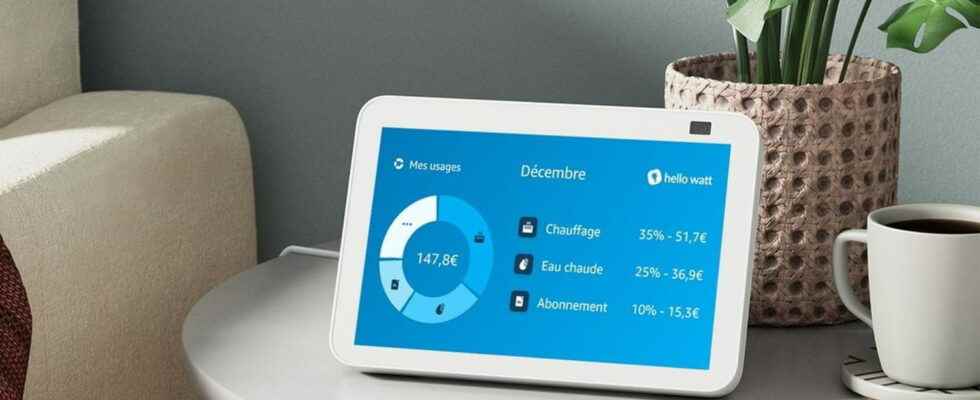Hello Watt has just launched a service allowing better real-time monitoring of a household’s energy consumption, in terms of electricity and gas. And Alexa users can access it with a simple voice request!
Between the energy crisis and the climate emergency, it is more essential than ever to control one’s energy consumption, whether in electricity or gas, and all means are welcome for this – especially as bills will increase. from February 2023 in France. Sites like ÉcoWatt have emerged to help consumers with this task, by giving them advice on how to optimize their use of electrical appliances in particular. It’s the turn of Hello Watt, an energy advisor for individuals, to offer a new service to better visualize their energy consumption. Soberly called Hello Watt, it is accessible free of charge via a simple web browser but also in the form of a mobile application on Android and iOS. As a bonus, a skill – behavior or a skill, in plain English – was developed especially for Alexa, Amazon’s intelligent assistant, in order to access consumption monitoring with a simple voice command.
Hello Watt: an application to control your energy consumption
Many people have had to lower the temperature of their homes and/or adopt new habits to reduce their energy consumption as much as possible. However, this does not prevent unpleasant surprises when you receive your bill… Although energy suppliers sometimes provide consumption monitoring applications – and this is not the case for everyone –, the data sometimes remains fuzzy and don’t really help customers optimize their spending.
This is where Hello Watt comes in. Indeed, the application indicates for each household the electricity and gas consumed per day or per month in kWh, but also in euros and in CO2 with the aim of raising user awareness and encouraging them to reduce their expenses. Better still, it analyzes consumption by use (heating, hot water, etc.) thanks to the company’s algorithms. Thus, this allows you to know the most energy-consuming devices and to know where the money escapes – which can lead to consider better insulating your home. The application even indicates a “weather forecast” for the means of energy production: for example, it warns that starting your laundry the next day between 3 p.m. and 4 p.m. will allow the use of nuclear energy, while the 6 p.m. will be based on fossil fuels.
To benefit from these services, all you have to do is create a free Hello Watt account and enter the number of your Linky meter – which equips the majority of households – or Gazpar in the application. The good news is that it works with any supplier (Total Energie, Engie, EDF, Eni, Buttagaz…) in order to be accessible to as many people as possible.
Hello Watt and Amazon: a dedicated skill for Alexa
Users of Amazon’s voice assistant will have the right to a new skill – a voice function associated with a particular “skill” – Hello Watt in order to monitor their energy consumption even more easily. This way, Alexa will be able to respond to queries like “Give me my electricity consumption”, “Alexa, launch Hello Watt” Where “Give me my electricity/gas consumption” on all Echo devices. Better yet, a new Hello Watt widget can be applied to the Amazon Echo Show 8, 10 and 15.
With these connected screens, users will be able to access information at a glance, and even display the consumption continuously on the home screen so that they no longer have to ask Alexa for it. Amazon’s approach is really part of a desire to make the control of its energy, and therefore its economy, more accessible and easier to achieve. Xavier Coudert, the co-founder and CTO of Hello Watt explains that “we are convinced that connected homes are privileged spaces for the energy transition and the reduction of electricity and gas consumption”. So, is the future in home automation?
